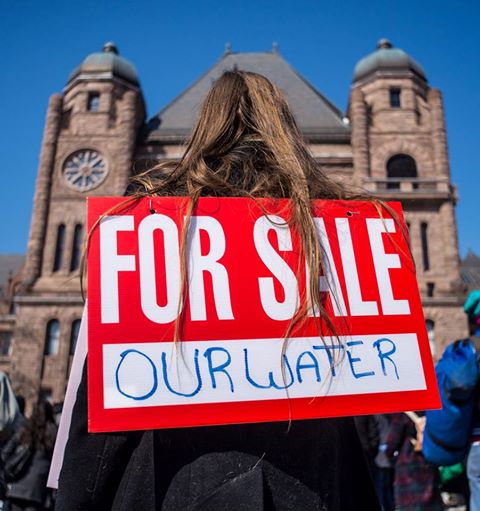On Thursday March 6, 2014, Canada’s National Energy Board ok’ed Enbridge’s plans to reverse the flow on its Line 9 pipeline now from West to East.
This would allow Enbridge Corporation to boost capacity on its 38-year-old Line 9 by 25 per cent, to 300,000 barrels a day.
The pro and against Enbridge Line 9 sides had been anticipating the approval before the National Energy Board released its 158-page decision late Thursday afternoon.
Anticipated in advance since in 2012, the Federal Conservatives eliminated the requirement for environmental assessments for these types of projects.
The decision can be read in full here.
This approval hinges on the company satisfying thirty conditions involving pipeline integrity, emergency response and public consultation. The board’s concerns are mainly the capacity increase in the line, rather than the reversal. This said, Canada’s federal regulator failed to attach several key conditions requested by municipalities and the province.
Conditions include cutting down on the response time it would take for Enbridge Corp. to react to a disaster, current estimates state it would take from one in a half to four hours to respond to a crisis.
More threatening than the reversal of flow is the increased capacity travelling near or directly through major municipalities such as Toronto, Sarnia, Hamilton, London and Kingston.
This pipeline also passes through or skirts close to eighteen First Nations communities who have, up to this point, not even been properly consulted which is required by law through Section 35 of the Canadian Constitution.
Canada also finally signed on to the United Nations Declaration on the Rights of Indigenous Peoples where it states that that the declaration, “prohibits discrimination against indigenous peoples”, and it “promotes their full and effective participation in all matters that concern them and their right to remain distinct and to pursue their own visions of economic and social development”.
We must remember that this pipeline, after all, is almost 30 years old and the federal government failed to convince the corporation to increase its insurance coverage to $1 billion in case of a potential spill.
According to Enbridge’s own reports, the company is responsible for over 800 spills between 1999 and 2010.
So yes, pipelines can burst. Consider the 2010 pipeline disaster in south Michigan when over Three million litres of oil (877,000 gallons) spilled and eventually made its way to the Kalamazoo River, one of the state’s major waterways.
Costs associated with that spill have peaked over one billion dollars and has yet to be complete.
At the time, Enbridge’s president and chief executive Patrick D. Daniel said “This is our responsibility…This is our mess. We’re going to clean it up.”
And despite mounting pressure from residents of the area, there is still a mess to clean up. Now imagine if the Line 9 pipeline burst in North Toronto. Talk about upping the ante for disaster.
None the less, with the pipeline’s approval, residents in cities like Toronto can only wait and hope the old pipeline won’t burst.
The a good note, regulator have ordered Enbridge Corp. to fix all cracks and corrosion along the 830-kilometre pipeline that meet repair criteria, but stopped short of ordering a full hydrostatic test which environmental activists were hoping for – though this could be ordered at a later date pending the outcome of an engineering assessment which must be completed before the reversal could begin.
For approval, Enbridge’s team estimated that it had access to $685 million insurance as well as to other resources should such a disaster occur.
“Toronto stated that it is insufficient to say that Enbridge is well capitalized since the level of capitalization is vulnerable to the vagaries of the market which today may be a very significant consideration,” the decision noted.
In an open letter by various authors dated March 4, 2014, and addressed to Premier Kathleen Wynne, Environment Minister Jim Bradley and Energy Minister Bob Chiarelli, First Nations and environmental activists, “request the Ontario government conduct a Provincial Environmental Assessment on Enbridge’s Line 9 pipeline proposal immediately.”
According to the letter which highlights the chemistry involved in tar sands extraction products, “Because tar sands dilbit is more corrosive than regular crude and has to be transported at a higher temperature and pressure, the likelihood of spills is higher than with regular oil pipelines.
Indeed, two of the largest pipeline spills in U.S. history have occurred from recently converted dilbit pipelines, including into the Kalamazoo River in Michigan, where people suffered from headaches, nausea and respiratory ailments and where three years later, the spill has still not been cleaned up. That’s because tar sands dilbit sinks to the bottom of water and is therefore much harder to clean up than regular oil.”
A group of 500 people attend a demonstration the next afternoon to show their disapproval of Line 9 and pledge to stop the project from continuing.
According to the website Reclaim Turtle Island, in reaction to the decision to approve the pipeline, “Line 9 shows us exactly what environmental racism looks like, from Aamjiwnaang to Jane & Finch – telling us that bodies of colour and Indigenous bodies are expendable for the larger project of profit. Line 9 is but expanded infrastructure to move the Athabasca tar sands eastward – it is an embodiment of the slow industrial genocide that is being committed by TransCanada, Enbridge, Suncor, and the Government of Canada, to name a few”
The site is calling out for actions against Enbridge on March 19, 2014.
*Photo by Kevin Konnyu from Toronto



